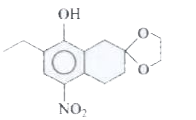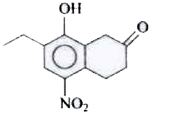Predict the major product formed when sodium ethoxide reacts with tert.Butyl chloride ?
To predict the major product formed when sodium ethoxide reacts with tert-butyl chloride, we can follow these steps:
Step 1: Identify the Reactants
The reactants in this reaction are:
- Sodium ethoxide (C2H5ONa)
- Tert-butyl chloride (C(CH3)3Cl)
Step 2: Understand the Reaction Type
Sodium ethoxide is a strong base and will facilitate an elimination reaction (dehydrohalogenation) when it reacts with tert-butyl chloride. In this reaction, the base will remove a hydrogen atom from the tert-butyl group while simultaneously eliminating the chloride ion.
Step 3: Structure of Tert-Butyl Chloride
The structure of tert-butyl chloride is:
CH3|CH3−C−Cl|CH3
This shows that the chlorine atom is attached to a carbon that is bonded to three other carbon atoms (making it tertiary).
Step 4: Mechanism of the Reaction
1. Sodium ethoxide acts as a strong base and abstracts a hydrogen atom (H) from the tert-butyl group.
2. The chlorine atom (Cl) leaves as a chloride ion (Cl⁻).
3. This results in the formation of a double bond between the carbon atoms where the hydrogen was removed and where the chlorine was attached.
Step 5: Identify the Product
The product formed from the elimination reaction is:
- 2-methylpropene (C5H10), which can be represented as:
CH3|CH2=C|CH3
This compound is also known as 2-methylprop-1-ene.
Step 6: Write the Final Equation
The overall reaction can be summarized as:
\( \text{C(CH}_3\text{)}_3\text{Cl} + \text{C}_2\text{H}_5\text{ONa} \rightarrow \text{C}_5\text{H}_{10} + \text{NaCl} + \text{C}_2\text{H}_5\text{OH} \)
Conclusion
The major product formed when sodium ethoxide reacts with tert-butyl chloride is 2-methylpropene.
---
The reactants in this reaction are:
- Sodium ethoxide (C2H5ONa)
- Tert-butyl chloride (C(CH3)3Cl)
Sodium ethoxide is a strong base and will facilitate an elimination reaction (dehydrohalogenation) when it reacts with tert-butyl chloride. In this reaction, the base will remove a hydrogen atom from the tert-butyl group while simultaneously eliminating the chloride ion.
The structure of tert-butyl chloride is:
CH3|CH3−C−Cl|CH3
This shows that the chlorine atom is attached to a carbon that is bonded to three other carbon atoms (making it tertiary).
1. Sodium ethoxide acts as a strong base and abstracts a hydrogen atom (H) from the tert-butyl group.
2. The chlorine atom (Cl) leaves as a chloride ion (Cl⁻).
3. This results in the formation of a double bond between the carbon atoms where the hydrogen was removed and where the chlorine was attached.
The product formed from the elimination reaction is:
- 2-methylpropene (C5H10), which can be represented as:
CH3|CH2=C|CH3
This compound is also known as 2-methylprop-1-ene.
The overall reaction can be summarized as:
\( \text{C(CH}_3\text{)}_3\text{Cl} + \text{C}_2\text{H}_5\text{ONa} \rightarrow \text{C}_5\text{H}_{10} + \text{NaCl} + \text{C}_2\text{H}_5\text{OH} \)
The major product formed when sodium ethoxide reacts with tert-butyl chloride is 2-methylpropene.
Topper's Solved these Questions
- BOOK - XII BOARD PREVIOUS YEAR PAPER ENGLISHCHAPTER - XII BOARDSEXERCISE - Questions29videos
XII BOARDS
- BOOK - XII BOARD PREVIOUS YEAR PAPER ENGLISHCHAPTER - XII BOARDSEXERCISE - OUTSIDE DELHI (SET-I)35videos
XII BOARDS
- BOOK - XII BOARD PREVIOUS YEAR PAPER ENGLISHCHAPTER - XII BOARDSEXERCISE - Set - 1 Comptt.29videos
XII BOARDS
- BOOK - XII BOARD PREVIOUS YEAR PAPER ENGLISHCHAPTER - SAMPLE PAPER 2019EXERCISE - SECTION: D1videos
SAMPLE PAPER 2019
Similar Questions
Knowledge Check
- Question 1 - Select One
Predict the major product of reaction:
 A
A B
B C
C D
D
- Question 2 - Select One
Predict the major product of the reaction.
 A
A B
B C
C D
D
- Question 3 - Select One
Predict the major product of given reaction :
 A
A B
B C
C D
D
Predict the major products of the following reactions:
 View Solution
View SolutionPredict the major product of given reaction :
 View Solution
View SolutionPredict the major product ofthe given reaction.
 View Solution
View SolutionPredict the major product of following reaction :
 View Solution
View SolutionPredict the major product of following reaction :
 View Solution
View Solution


